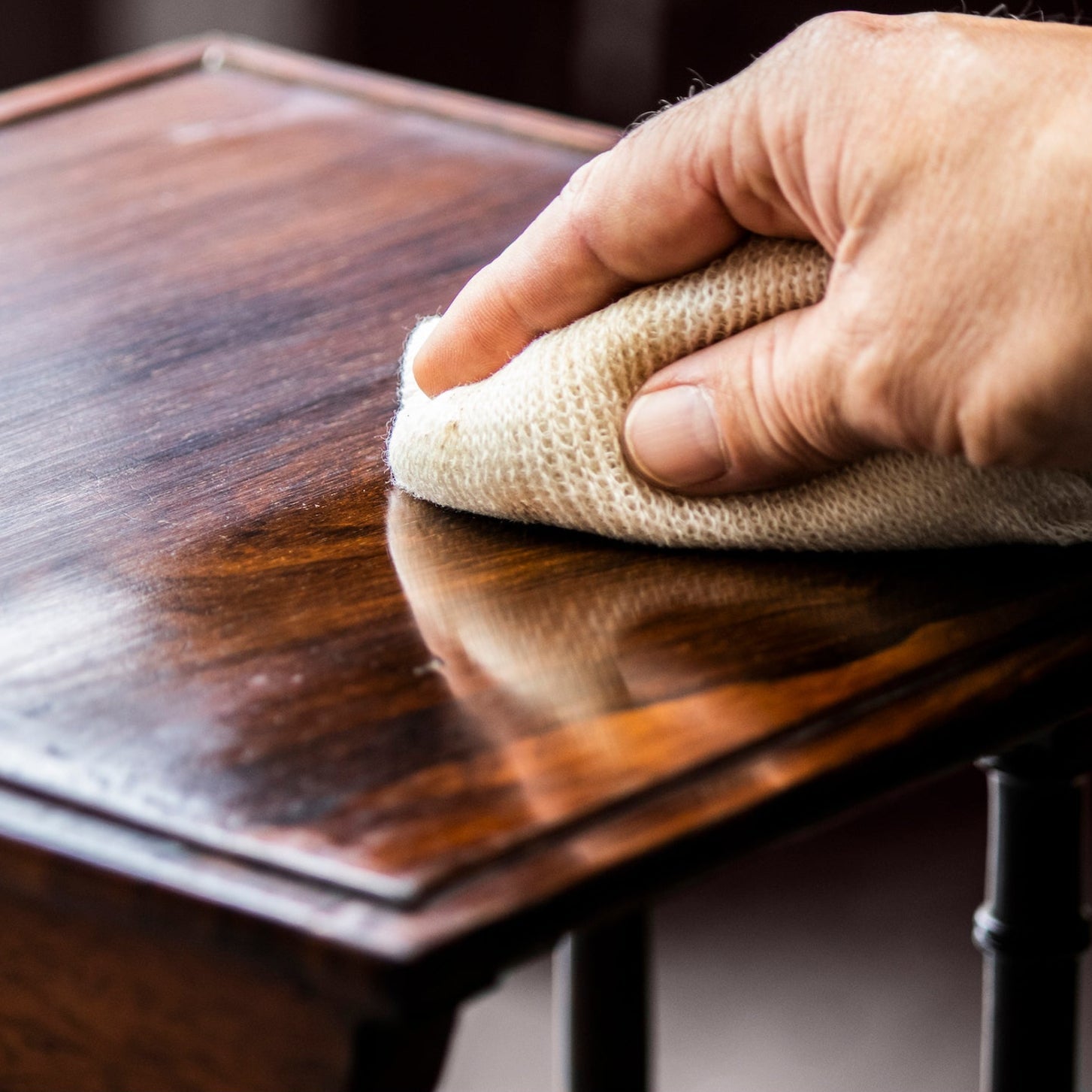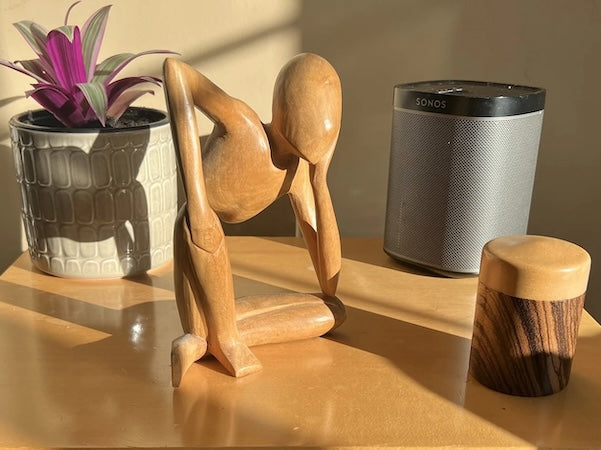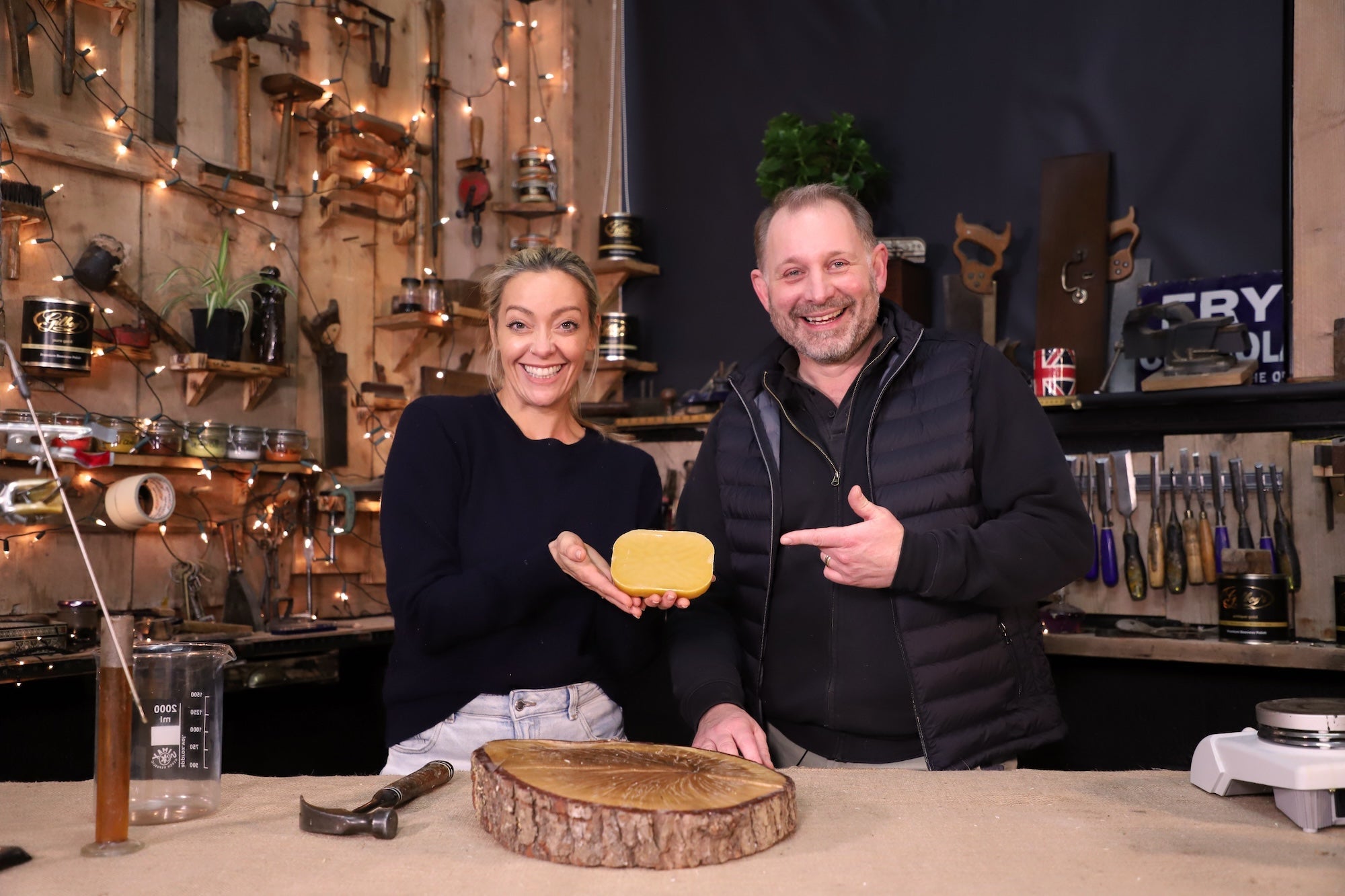Simon Gilboy - Feb 12th 2024
Gilboys Beeswax Polishes Have Added UV Protection

W
hen I first started Gilboys my mission was ‘Preserving The Past for The Future’. It is stated loud and proud on the homepage of our website and remains our mission today in our 30th anniversary year.
I have spent over three decades caring and restoring treasured items of furniture for customers. It is what drove me to create what is considered to be the best beeswax polish on the market today. An all-natural sacrificial layer to protect the finishes of treasured heirlooms that highlights and preserves the beauty of the wood beneath.
I started with a traditional beeswax polish formula that utilised only natural ingredients, such as beeswax and pure pine turpentine, but in the spirit of 'standing on the shoulders of giants' I have always been keen to harness the advances in natural science to improve our polishes with the aim of providing the best possible protection for wood finishes while enhancing the beauty of the wood underneath.
In our furniture restoration work, aside from the immediate impact of accidents and the regular wear and tear from daily use, the second most frequent issue we encountered was damage from the sun. Specifically, it was the UV radiation from the sun that posed a significant threat, leading to the deterioration of wood finishes and resulting in the fading or bleaching of the wood.
With a wavelength of 315-400nm, Ultraviolet A (UVA) is hardly absorbed at all by the ozone layer. It passes right through glass and clothing and causes fabrics, paints, wood finishes (e.g. shellac) and wood to discolour.
The captivating hues in wood arise from a complex interplay between light and its primary structural component, lignin. Just like scaffolding provides support and structure to a building during construction, lignin provides structural support to plant cells. It is deposited in the spaces between cellulose fibres in the cell walls, adding rigidity and strength.
Lignin itself contains conjugated double-bond molecules called chromophores. The specific molecular shape of chromophores (of alternating single and double bonds between their atoms) cause them to absorb certain wavelengths of light and so the light that is reflected back lacks these wavelengths and we perceive it as a particular colour.

Atomic structure of lignin
Chromophores you might be familiar with include:
- Chlorophyll, responsible for the green colour of leaves
- Carotenoids, responsible for the orange, yellow, and red colours in carrots, tomatoes, and pumpkins
- The heme group in haemoglobin that causes our blood to appear red
Many of the chromophores in lignin absorb photons of UV light mostly around the 340nm wavelength. Exposure to this wavelength of light can lead to the breaking of chemical bonds, weakening the lignin structure and contributing to gradual wood degradation.
Initial Darkening
Upon absorbing UV-A photons, chromophore molecules transition to higher energy states (i.e. they ‘jiggle’ and change shape at a faster rate). They relax back to their ground state as some of the absorbed energy dissipates as heat, inducing slight expansion and rearrangement within the lignin network. This subtle shift can lead to a transient darkening effect due to increased light scattering.
In specific scenarios, UV-A wavelengths trigger photochemical reactions within the lignin system. These reactions can change the structure and shape of the chromophores which results in the absorption of different (or more) wavelengths of light which can contribute to a deepening of the wood's natural hue.
Gradual Bleaching
Over time, UV-A exposure breaks down the chemical bonds within the lignin structure to such an extent that it decreases its density, and diminishes its light-scattering capabilities. Consequently, the wood appears lighter or bleached. The tireless assault of UV-A with repeated excitations and energy transfers gradually breaks down and eventually destroys the chromophores, culminating in a progressive loss of colour vibrancy and a bleached appearance.
If only we could create a sun cream for furniture! Unfortunately the zinc oxide and titanium dioxide in sun creams act as a physical barrier that blocks and reflects a broad spectrum of light, whereas we want all visible light to pass through our polish unabated except that of the UV wavelengths (250-400nm).
In recent years there has been a lot of scientific research around the prevention of skin cancer caused by exposure to UV. In 2008 researchers found that a natural substance called myricetin suppresses UVB-induced skin cancer (link to study) and in 2011 another study found that myricetin can prevent skin cancer: “Myricetin is a potent chemopreventive phytochemical in skin carcinogenesis”. All of the studies highlighted the ability of myricetin to absorb and scatter UV light.

Myricetin is a natural compound found in various plant sources, and is abundant in the fruit wax of Myrica cerifera. This was the primary reason we added myrica wax to our polishes; to reduce the effects of UV radiation on the wood and finishes our polishes protect.
As you can see from the graph above, myricetin is most effective at absorbing 376nm light, but the most damaging wavelength of UV light is around 340nm (UV-A), as it penetrates deeper into the wood.

For years I have been experimenting and searching for an additive that would absorb more of the highly damaging UV while MOST importantly, not affecting the way our beeswax polish performs in any way. At the end of the summer in 2023 it was looking like I had cracked it. But how effective was it?
I needed to have experts at an independent body test the polish in a very controlled, scientific manner and provided samples to the Centre for Infrastructure Management (CIM) within the Materials and Engineering Research Institute at Sheffield Hallam University for rigourous testing.
The university scientists tested my formula in a UV accelerated machine that would blast the samples with 340nm UV light for 28 days straight.
The equivalent of 12 years of continuous direct sunlight!.

The full report (pdf) is available on request.
While our wax polish is not a silver bullet solution to sun bleaching, initial tests by the Centre for Infrastructure Management (CIM) within the Materials and Engineering Research Institute at Sheffield Hallam University clearly indicate it can provide meaningful protection by absorbing a significant amount of harmful UV rays that degrade wooden furniture.
Of course, many variables affect the severity of light damage. We make no claims that our product is a catch-all cure. However, by filtering a significant portion of UV rays, we believe we have demonstrated that Gilboys polish can slow down the fading process and extend the lifespan of wood finishes and furniture.
All Gilboys polishes shipped from today contain the UV absorber.



